The Institute for Judicial Studies - Judicial Reports by Leah Nelson
lnelson@judicialstudies.com - Posted 07-09-08
The system for adjudicating accusations of misconduct against attorneys sounds relatively fair and efficient on its face. So why does the system put such a mask on its administration?
Correction Appended
To paraphrase George Orwell, all lawyer disciplinary committees are equal, but some are more equal than others. Or so say attorneys who defend lawyers before the committees of New York’s First and Second Appellate Departments.
Major offenses — such as stealing clients’ money, committing forgery, billing fraudulently, or chronically neglecting client matters — are treated similarly across the State. But observers consistently note that when it comes to the many areas of disciplinary discretion, the Second Department is a markedly more pleasant place to be than the First.
According to prominent lawyers’ defense counselors, Justice Gail Prudenti’s 2002 appointment as Presiding Justice of the Second Department hailed a sea change among the three Grievance Committees that handle complaints there.
“Five, ten years ago, they didn’t care if [a lawyer’s onetime wrongdoing] was a mistake,” said Deborah Scalise of White Plains’ Scalise and Hamilton, who was Deputy Chief Counsel to the First Department’s Disciplinary Committee for nine years before shifting to the defense side. “That’s started to change now — they’ve started to look at lawyers individually.”
Perhaps. But the numbers — to the extent they can be pulled out of this bureaucratic labyrinth — show that lawyers accused in the Second Department are significantly more likely to be sanctioned at both committee and judicial levels than in the First.
While remarkable, the relative differences are less worrisome than a common opacity preventing analysis of either system. With justice delayed amounting to justice denied in this arena every bit as much as in other venues, it is nigh on impossible to determine how long it takes either Department to conduct the business of attorney discipline.
THE LARSEN LAG
Judicial Reports conducted an informal review of published 2008 disciplinary proceedings from the First and Second Departments and found that the majority did not include the date of the original complaint, making it impossible to determine how much time passed between the start of an investigation and an offender’s interim suspension and/or the final disposition of the case. The greater part of published decisions reviewed included only the date that the panel of judges granted a Committee’s request to order the accused attorney to appear in court — and such requests are only made after thorough preliminary investigation by Committee staff.
Cases involving serious misconduct can be referred to the court for disposition. Though procedures vary slightly between the First and Second Departments, in both, Committee staffers recommend a penalty, with judges retaining full discretion to impose a more severe one, remand a case back to the grievance committee that referred it, or dismiss.
The almost accidental precision recorded in the First Department’s Matter of Larsen offers a highly unusual glimpse into just how long it took to dispose of at least one messy case.
After the First Department Disciplinary Committee referred the case against Leah Larsen, a matrimonial lawyer, to the court, in January 2008 the panel of judges found her guilty of 26 charges and suspended her from the practice of law for two and a half years. All 26 charges stemmed from Larsen’s work with a single client, and included 11 charges of improperly notarizing her client’s signature and submitting the documents to court; five charges that stemmed from telling her client he could ignore a court order that certain money be used to repay his 401(K) account (and, instead, use it to pay her fees); and six charges regarding her failure “to send regular itemized bills, but instead sent a single, non-itemized, excessive bill for $168,400 after the close of the case, and pressured her client to withdraw a complaint he had made about her fees.”
She was also ordered to pay $30,464 restitution to her client.
Judge James McGuire wrote a 2,709-word dissent excoriating Larsen and calling for her disbarment. But here’s the rub: A close reading of this opinion reveals that the First Department Disciplinary Committee first learned that something was amiss in or around June 2001, when a Court Attorney for the judge presiding over the divorce case that led to Larsen’s downfall asked them to inquire into her fee and billing methods.
That’s almost seven years from start to finish. And matrimonial decisions, which might have been useful in tracking Larsen’s professional activity while her case languished in Committee between the time of the 2001 complaint and her suspension on January 31, 2008, are infrequently published, so there is no public record of whether Larsen continued to practice law in the interim.
Observers close to the process say that not all cases take as long to resolve as Matter of Larsen. And there is a procedure designed to protect the public from lawyers who present an “immediate threat.” The Court can suspend lawyers on an interim basis while the investigation of complaints against them is ongoing., and attorneys who utterly fail to cooperate with a Committee’s investigation can also be suspended for on an interim basis.
But until and unless the court agrees to interim suspension, lawyers against whom complaints have been filed are free to practice with impunity.
The problem for anyone trying to crunch the numbers is that there is no way to tell how many malfeasant attorneys are continuing to practice — and how long, if ever, the Committees take to ferret them out.
TRANSLUCENT AT BEST
A report by the New York State Bar Association offers a snapshot of the number and outcome of complaints submitted to Disciplinary Committees across the State. Less transparent are the Committees backlogs: The number of cases pending at the end of each year-long period is listed, but the report includes no data pertaining to how long they have been hanging around.
What emerges instead is an often self-contradictory picture of a system that lacks anything like official deadlines for progress. Insiders in both the First and Second Departments stressed that the Committees make every effort to move investigations along apace, yet also that that they impose no deadlines, even informally, for the disposition of matters before them.
The only guideline that comes close to such a standard for accountability is in the Second Department, where, according to Special Counsel Robert Guido, staff try to sort and acknowledge complaints within 10 days of receipt.
Hal Leiberman, a lawyers’ defense attorney who was Chief Counsel to the First Department from 1989 to 1998, said that he used to require staff to explain why any case remained open longer than six months. Many times, he said, investigators said they were focusing on big cases entailing serious violations — which, however sensible, could mean in practice that simple cases stay at the bottom of the pile for an unreasonably long time, he said.
He added, “The only reason for discipline is to protect the public or prevent further misconduct. It’s never to punish.”
Which cuts both ways, he said. Lawyers against whom dismissible or otherwise “simple” complaints have been made don’t deserve to have open matters hanging over their heads just because more serious misconduct is investigated.
Though neither Committee currently has such a time limit, First Department Counsel Friedberg said there is not a substantial backlog of meritless complaints waiting for dismissal.
Guido defended the practice of putting less serious matters at the back of the line: “Since there’s no danger to the public because the lawyer is not a hazard walking around there, [such complaints are] disposed of in due course.”
He added, “Anything that’s routine that’s lingering longer than a year, there’s got to be a question as to what the Staff Counsel is doing with that case, [and] in the simpler cases, the less controversial cases, after the staff attorney has [completed his or her investigation], it should be done within 90 days.”
Complainants who are dissatisfied with a dismissal can request that their allegations be reviewed by a second Committee Member and, if it is still rejected, can ask that Justice Prudenti consider it herself.
Prudenti’s decision, however, is final, unless new evidence is presented.
In the First Department, Freidberg said, complainants have 30 days to ask that a second Committee Member review their complaints, but have no options for appeal beyond that point.
SOLO SUSCEPTIBILITY
Concerned that solo practitioners with small staffs and high caseloads are particularly susceptible to sanction for inadvertent violations such as failing to call clients back, making accounting errors, or filing papers improperly, Prudenti commissioned a review of Committee procedures in 2002.
She also created Guido’s position of Special Counsel, whose purpose is to serve as a general consultant on disciplinary matters and push to eliminate the differences among the three Committees. (Though the Second Department counts fewer lawyers than the First, their geographical dispersion makes it more practical to have three committees with smaller staffs: One for Westchester, one for Nassau and Suffolk, and a third for Brooklyn and Staten Island.)
Prudenti sees some errors so often that, in May 2008, she wrote an article for the New York Law Journal to refresh lawyers about the rules pertaining to delegating authority over client funds to other parties.
“What causes me concern is in the Second Department, and I’ve tried to address this, is real estate and escrow violations,” she said in an interview. “What we’ve tried to do is educate the attorney. [There are] consistent mistakes that attorneys make, and they don’t even realize they’re making them . . . . There’s a lot in this area that’s very troublesome, and attorneys may not realize they’re technically in violation.”
The First Department is said to be less forgiving of innocent errors. Its Disciplinary Committee “takes a somewhat more technical and formal approach to attorney discipline, and is often unwilling to consider some of the human dynamics that cause lawyers to make mistakes,” said Michael Ross, a lawyers’ defense counselor and frequent advisor on ethics to the New York State and American Bar Associations.
“I think lawyers do know the rules and should know the rules,” said Alan Friedberg, Chief Counsel to the First Department’s Committee. “It’s no defense that you don’t know the rules.”
Friedberg recognizes that not every misdeed deserves formal sanctions. If a lawyer hasn’t officially violated the Code of Professional Conduct but is “on the wrong wavelength,” he said, the Committee might refer the issue to mediation. (But rarely: Of 4,471 total First Department dispositions in 2006, 34 were referred for mediation.)
ZERO-SUM IN THE FIRST
The two Departments differ procedurally as well as culturally, the single biggest discrepancy being that the Second Department has a disciplinary tool (which predates Prudenti’s arrival) between outright dismissal and Letters of Admonition. To let a lawyer know that he is on thin ice but hasn’t technically violated the State’s Code of Professional Conduct, the Committee sends unofficial sanctions called Letters of Caution.
The First Department does not: Its court abolished them in the early 1990s.
Defender Scalise praised the third-way option.
“There are cases that really don’t warrant that admonition, or warrant that dismissal — you want to shake someone up. In the Second Department, they can say, ‘We don’t like what you did, but we’re not going to sanction you,’ ” she said. “It would be nice to have that letter of caution in the First Department to kind of stop someone in their tracks before it gets any worse.”
Justice Jonathan Lippman, who has presided over the First Department since May 2007 — and who, as Chief Administrative Judge from January 1996 until his appointment to the Appellate Division, advocated their use by all disciplinary committees — is looking into reinstating Letters of Caution.
“I certainly understand the rationale, why it can make some sense to give lawyers a warning, [but] it’s been a little bit of a controversial issue here,” he said. “Anywhere that we differ from the other departments, it’s worth looking at. Why [do] the Second, Third, and Fourth departments think it’s a good idea and we don’t do it here? . . . I think that some people believe you either discipline someone or you don’t; you don’t give out advisory opinions. And I think the advocates of that position would probably argue that you don’t want to tolerate misconduct. I certainly don’t necessarily buy into that kind of approach.”
The First Department’s relatively black-and-white take on committee-level discipline does not sit well with defense lawyers. “Sometimes things get dismissed and you’re happy and it should be; sometimes things get dismissed and you think, ‘OK, that was a gift,’ ” said Scalise. “Sometimes things get a sanction and you wonder, ‘Why did they go after that person?’ ”
THE NUMBERS
Judicial Reports looked at data from the New York State Bar Association’s 2006 Report on Professional Discipline (the most recent available), and found numbers that seem to belie defense lawyers’ assertion that the First Department exercises a harsher form of discipline than the Second.
According to the Office of Court Administration, with whom all lawyers must register, 78,238 lawyers are admitted in the First Department. With 46,593, the Second Department has less than two-thirds as many.
Yet even in absolute terms, in 2006 the Second Department Committees sanctioned more lawyers than the First. Even excluding the informal Letters of Caution, the Committees used Letters of Admonition to privately sanction 148 lawyers, while the First Department Committee used such letters against 90 offenders.
Committee sanctions are sealed: Only the lawyer who is sanctioned, the complaining client, the Committee and the court are informed of a complaint’s resolution (and for confidentiality reasons, the notification sent to the complainant does not include the lawyer’s name).
Court decisions to sanction lawyers, however, are published and available to anyone with access to the Internet. In 2006, Second Department judges sanctioned more lawyers (90) than their First Department counterparts (65).
Insiders speculated that differences between the Departments’ disciplinary statistics might stem in part from differences within their lawyer populations.
Said Prudenti, “It’s really difficult in the Second Department, because we have an urban environment and a suburban environment,” each with a different type of lawyer predominating. Westchester and Long Island’s large contingent of real estate lawyers — who are often solo practitioners with minimal support staff and little management or accounting experience — are especially prone to violations like failing to erect proper barriers between different clients’ escrow accounts.
In contrast, the First Department overflows with large Manhattan law firms whose layered systems of responsibility maintain checks and balances and generally provide more sophisticated oversight.
All of which might explain the differences between the two Departments’ discipline systems. More disturbing, however, is the secrecy and unaccountability that shrouds so much of their administration.
This article has been revised to reflect the following correction:
Correction: July 9, 2008; 1:55 PM
This original version of this article, posted at July 9, 2008 at 1:23 AM, misstated the terms of Second Department Special Counsel Robert Guido's suggested time line for the presentation of simpler cases for disposition. Guido suggests that Staff Counsel should present simpler cases for disposition within 90 days of the completion of the investigation, not within 90 days of receiving the respondant's answer to a complaint.
The system for adjudicating accusations of misconduct against attorneys sounds relatively fair and efficient on its face. So why does the system put such a mask on its administration?
Correction Appended
To paraphrase George Orwell, all lawyer disciplinary committees are equal, but some are more equal than others. Or so say attorneys who defend lawyers before the committees of New York’s First and Second Appellate Departments.
Major offenses — such as stealing clients’ money, committing forgery, billing fraudulently, or chronically neglecting client matters — are treated similarly across the State. But observers consistently note that when it comes to the many areas of disciplinary discretion, the Second Department is a markedly more pleasant place to be than the First.
According to prominent lawyers’ defense counselors, Justice Gail Prudenti’s 2002 appointment as Presiding Justice of the Second Department hailed a sea change among the three Grievance Committees that handle complaints there.
“Five, ten years ago, they didn’t care if [a lawyer’s onetime wrongdoing] was a mistake,” said Deborah Scalise of White Plains’ Scalise and Hamilton, who was Deputy Chief Counsel to the First Department’s Disciplinary Committee for nine years before shifting to the defense side. “That’s started to change now — they’ve started to look at lawyers individually.”
Perhaps. But the numbers — to the extent they can be pulled out of this bureaucratic labyrinth — show that lawyers accused in the Second Department are significantly more likely to be sanctioned at both committee and judicial levels than in the First.
While remarkable, the relative differences are less worrisome than a common opacity preventing analysis of either system. With justice delayed amounting to justice denied in this arena every bit as much as in other venues, it is nigh on impossible to determine how long it takes either Department to conduct the business of attorney discipline.
THE LARSEN LAG
Judicial Reports conducted an informal review of published 2008 disciplinary proceedings from the First and Second Departments and found that the majority did not include the date of the original complaint, making it impossible to determine how much time passed between the start of an investigation and an offender’s interim suspension and/or the final disposition of the case. The greater part of published decisions reviewed included only the date that the panel of judges granted a Committee’s request to order the accused attorney to appear in court — and such requests are only made after thorough preliminary investigation by Committee staff.
Cases involving serious misconduct can be referred to the court for disposition. Though procedures vary slightly between the First and Second Departments, in both, Committee staffers recommend a penalty, with judges retaining full discretion to impose a more severe one, remand a case back to the grievance committee that referred it, or dismiss.
The almost accidental precision recorded in the First Department’s Matter of Larsen offers a highly unusual glimpse into just how long it took to dispose of at least one messy case.
After the First Department Disciplinary Committee referred the case against Leah Larsen, a matrimonial lawyer, to the court, in January 2008 the panel of judges found her guilty of 26 charges and suspended her from the practice of law for two and a half years. All 26 charges stemmed from Larsen’s work with a single client, and included 11 charges of improperly notarizing her client’s signature and submitting the documents to court; five charges that stemmed from telling her client he could ignore a court order that certain money be used to repay his 401(K) account (and, instead, use it to pay her fees); and six charges regarding her failure “to send regular itemized bills, but instead sent a single, non-itemized, excessive bill for $168,400 after the close of the case, and pressured her client to withdraw a complaint he had made about her fees.”
She was also ordered to pay $30,464 restitution to her client.
Judge James McGuire wrote a 2,709-word dissent excoriating Larsen and calling for her disbarment. But here’s the rub: A close reading of this opinion reveals that the First Department Disciplinary Committee first learned that something was amiss in or around June 2001, when a Court Attorney for the judge presiding over the divorce case that led to Larsen’s downfall asked them to inquire into her fee and billing methods.
That’s almost seven years from start to finish. And matrimonial decisions, which might have been useful in tracking Larsen’s professional activity while her case languished in Committee between the time of the 2001 complaint and her suspension on January 31, 2008, are infrequently published, so there is no public record of whether Larsen continued to practice law in the interim.
Observers close to the process say that not all cases take as long to resolve as Matter of Larsen. And there is a procedure designed to protect the public from lawyers who present an “immediate threat.” The Court can suspend lawyers on an interim basis while the investigation of complaints against them is ongoing., and attorneys who utterly fail to cooperate with a Committee’s investigation can also be suspended for on an interim basis.
But until and unless the court agrees to interim suspension, lawyers against whom complaints have been filed are free to practice with impunity.
The problem for anyone trying to crunch the numbers is that there is no way to tell how many malfeasant attorneys are continuing to practice — and how long, if ever, the Committees take to ferret them out.
TRANSLUCENT AT BEST
A report by the New York State Bar Association offers a snapshot of the number and outcome of complaints submitted to Disciplinary Committees across the State. Less transparent are the Committees backlogs: The number of cases pending at the end of each year-long period is listed, but the report includes no data pertaining to how long they have been hanging around.
What emerges instead is an often self-contradictory picture of a system that lacks anything like official deadlines for progress. Insiders in both the First and Second Departments stressed that the Committees make every effort to move investigations along apace, yet also that that they impose no deadlines, even informally, for the disposition of matters before them.
The only guideline that comes close to such a standard for accountability is in the Second Department, where, according to Special Counsel Robert Guido, staff try to sort and acknowledge complaints within 10 days of receipt.
Hal Leiberman, a lawyers’ defense attorney who was Chief Counsel to the First Department from 1989 to 1998, said that he used to require staff to explain why any case remained open longer than six months. Many times, he said, investigators said they were focusing on big cases entailing serious violations — which, however sensible, could mean in practice that simple cases stay at the bottom of the pile for an unreasonably long time, he said.
He added, “The only reason for discipline is to protect the public or prevent further misconduct. It’s never to punish.”
Which cuts both ways, he said. Lawyers against whom dismissible or otherwise “simple” complaints have been made don’t deserve to have open matters hanging over their heads just because more serious misconduct is investigated.
Though neither Committee currently has such a time limit, First Department Counsel Friedberg said there is not a substantial backlog of meritless complaints waiting for dismissal.
Guido defended the practice of putting less serious matters at the back of the line: “Since there’s no danger to the public because the lawyer is not a hazard walking around there, [such complaints are] disposed of in due course.”
He added, “Anything that’s routine that’s lingering longer than a year, there’s got to be a question as to what the Staff Counsel is doing with that case, [and] in the simpler cases, the less controversial cases, after the staff attorney has [completed his or her investigation], it should be done within 90 days.”
Complainants who are dissatisfied with a dismissal can request that their allegations be reviewed by a second Committee Member and, if it is still rejected, can ask that Justice Prudenti consider it herself.
Prudenti’s decision, however, is final, unless new evidence is presented.
In the First Department, Freidberg said, complainants have 30 days to ask that a second Committee Member review their complaints, but have no options for appeal beyond that point.
SOLO SUSCEPTIBILITY
Concerned that solo practitioners with small staffs and high caseloads are particularly susceptible to sanction for inadvertent violations such as failing to call clients back, making accounting errors, or filing papers improperly, Prudenti commissioned a review of Committee procedures in 2002.
She also created Guido’s position of Special Counsel, whose purpose is to serve as a general consultant on disciplinary matters and push to eliminate the differences among the three Committees. (Though the Second Department counts fewer lawyers than the First, their geographical dispersion makes it more practical to have three committees with smaller staffs: One for Westchester, one for Nassau and Suffolk, and a third for Brooklyn and Staten Island.)
Prudenti sees some errors so often that, in May 2008, she wrote an article for the New York Law Journal to refresh lawyers about the rules pertaining to delegating authority over client funds to other parties.
“What causes me concern is in the Second Department, and I’ve tried to address this, is real estate and escrow violations,” she said in an interview. “What we’ve tried to do is educate the attorney. [There are] consistent mistakes that attorneys make, and they don’t even realize they’re making them . . . . There’s a lot in this area that’s very troublesome, and attorneys may not realize they’re technically in violation.”
The First Department is said to be less forgiving of innocent errors. Its Disciplinary Committee “takes a somewhat more technical and formal approach to attorney discipline, and is often unwilling to consider some of the human dynamics that cause lawyers to make mistakes,” said Michael Ross, a lawyers’ defense counselor and frequent advisor on ethics to the New York State and American Bar Associations.
“I think lawyers do know the rules and should know the rules,” said Alan Friedberg, Chief Counsel to the First Department’s Committee. “It’s no defense that you don’t know the rules.”
Friedberg recognizes that not every misdeed deserves formal sanctions. If a lawyer hasn’t officially violated the Code of Professional Conduct but is “on the wrong wavelength,” he said, the Committee might refer the issue to mediation. (But rarely: Of 4,471 total First Department dispositions in 2006, 34 were referred for mediation.)
ZERO-SUM IN THE FIRST
The two Departments differ procedurally as well as culturally, the single biggest discrepancy being that the Second Department has a disciplinary tool (which predates Prudenti’s arrival) between outright dismissal and Letters of Admonition. To let a lawyer know that he is on thin ice but hasn’t technically violated the State’s Code of Professional Conduct, the Committee sends unofficial sanctions called Letters of Caution.
The First Department does not: Its court abolished them in the early 1990s.
Defender Scalise praised the third-way option.
“There are cases that really don’t warrant that admonition, or warrant that dismissal — you want to shake someone up. In the Second Department, they can say, ‘We don’t like what you did, but we’re not going to sanction you,’ ” she said. “It would be nice to have that letter of caution in the First Department to kind of stop someone in their tracks before it gets any worse.”
Justice Jonathan Lippman, who has presided over the First Department since May 2007 — and who, as Chief Administrative Judge from January 1996 until his appointment to the Appellate Division, advocated their use by all disciplinary committees — is looking into reinstating Letters of Caution.
“I certainly understand the rationale, why it can make some sense to give lawyers a warning, [but] it’s been a little bit of a controversial issue here,” he said. “Anywhere that we differ from the other departments, it’s worth looking at. Why [do] the Second, Third, and Fourth departments think it’s a good idea and we don’t do it here? . . . I think that some people believe you either discipline someone or you don’t; you don’t give out advisory opinions. And I think the advocates of that position would probably argue that you don’t want to tolerate misconduct. I certainly don’t necessarily buy into that kind of approach.”
The First Department’s relatively black-and-white take on committee-level discipline does not sit well with defense lawyers. “Sometimes things get dismissed and you’re happy and it should be; sometimes things get dismissed and you think, ‘OK, that was a gift,’ ” said Scalise. “Sometimes things get a sanction and you wonder, ‘Why did they go after that person?’ ”
THE NUMBERS
Judicial Reports looked at data from the New York State Bar Association’s 2006 Report on Professional Discipline (the most recent available), and found numbers that seem to belie defense lawyers’ assertion that the First Department exercises a harsher form of discipline than the Second.
According to the Office of Court Administration, with whom all lawyers must register, 78,238 lawyers are admitted in the First Department. With 46,593, the Second Department has less than two-thirds as many.
Yet even in absolute terms, in 2006 the Second Department Committees sanctioned more lawyers than the First. Even excluding the informal Letters of Caution, the Committees used Letters of Admonition to privately sanction 148 lawyers, while the First Department Committee used such letters against 90 offenders.
Committee sanctions are sealed: Only the lawyer who is sanctioned, the complaining client, the Committee and the court are informed of a complaint’s resolution (and for confidentiality reasons, the notification sent to the complainant does not include the lawyer’s name).
Court decisions to sanction lawyers, however, are published and available to anyone with access to the Internet. In 2006, Second Department judges sanctioned more lawyers (90) than their First Department counterparts (65).
Insiders speculated that differences between the Departments’ disciplinary statistics might stem in part from differences within their lawyer populations.
Said Prudenti, “It’s really difficult in the Second Department, because we have an urban environment and a suburban environment,” each with a different type of lawyer predominating. Westchester and Long Island’s large contingent of real estate lawyers — who are often solo practitioners with minimal support staff and little management or accounting experience — are especially prone to violations like failing to erect proper barriers between different clients’ escrow accounts.
In contrast, the First Department overflows with large Manhattan law firms whose layered systems of responsibility maintain checks and balances and generally provide more sophisticated oversight.
All of which might explain the differences between the two Departments’ discipline systems. More disturbing, however, is the secrecy and unaccountability that shrouds so much of their administration.
This article has been revised to reflect the following correction:
Correction: July 9, 2008; 1:55 PM
This original version of this article, posted at July 9, 2008 at 1:23 AM, misstated the terms of Second Department Special Counsel Robert Guido's suggested time line for the presentation of simpler cases for disposition. Guido suggests that Staff Counsel should present simpler cases for disposition within 90 days of the completion of the investigation, not within 90 days of receiving the respondant's answer to a complaint.




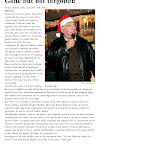

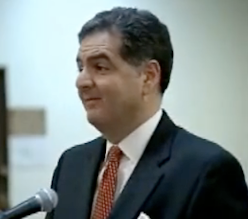
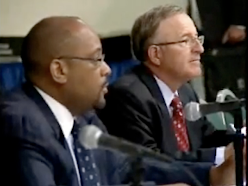
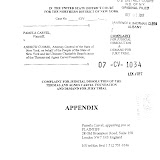
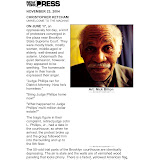

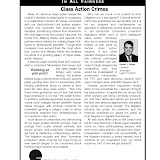

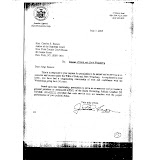
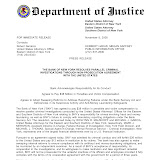
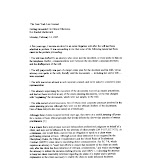

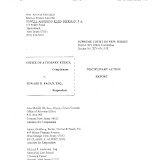
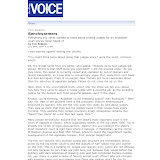

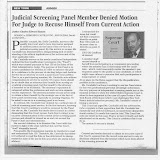

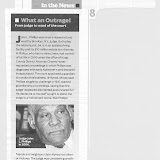
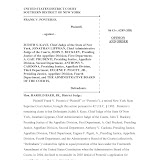
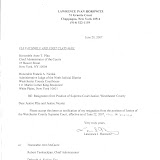
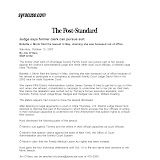
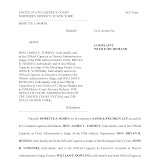

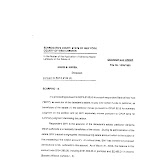
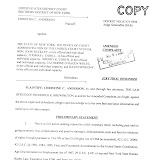
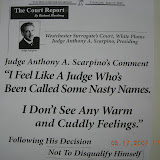
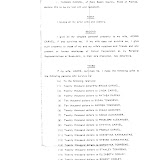
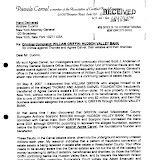
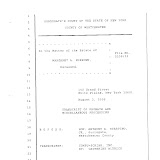
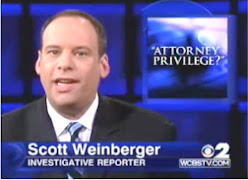
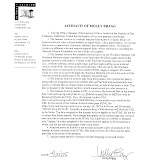

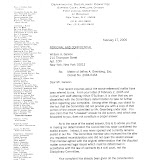
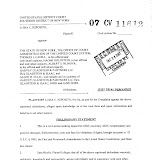
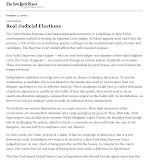
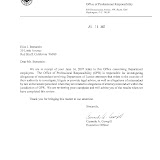
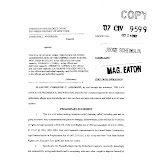
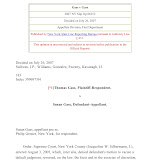
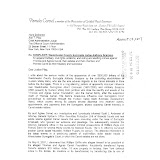

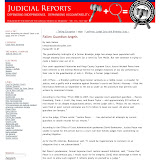
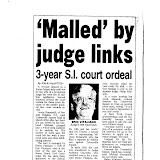
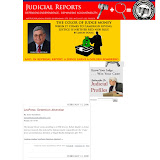
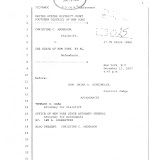
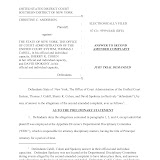
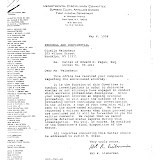
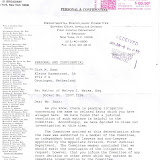
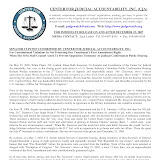

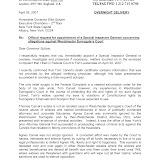
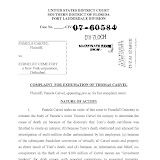
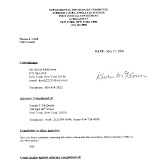
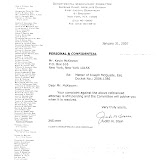
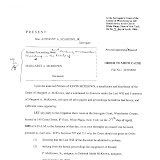
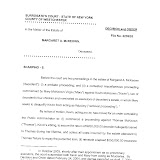
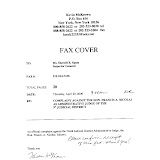
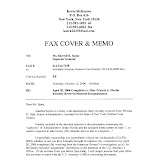
4 comments:
this whole thing is a sham! It provides jobs for a bunch of coverup artists! They paper over everything for their friends!
their days are numbered, run them all out of town on a rail
It's quite troubling that the ethics committees are themselves unethical.
I've had dealing with both the 1st and 2nd Dept. committees and I can tell you that the operational procedures are vastly different. I believe attorneys are entitled to a fair system- one that operates from an open process, not by whim or the seat of the investigative attorney's pants.
Post a Comment